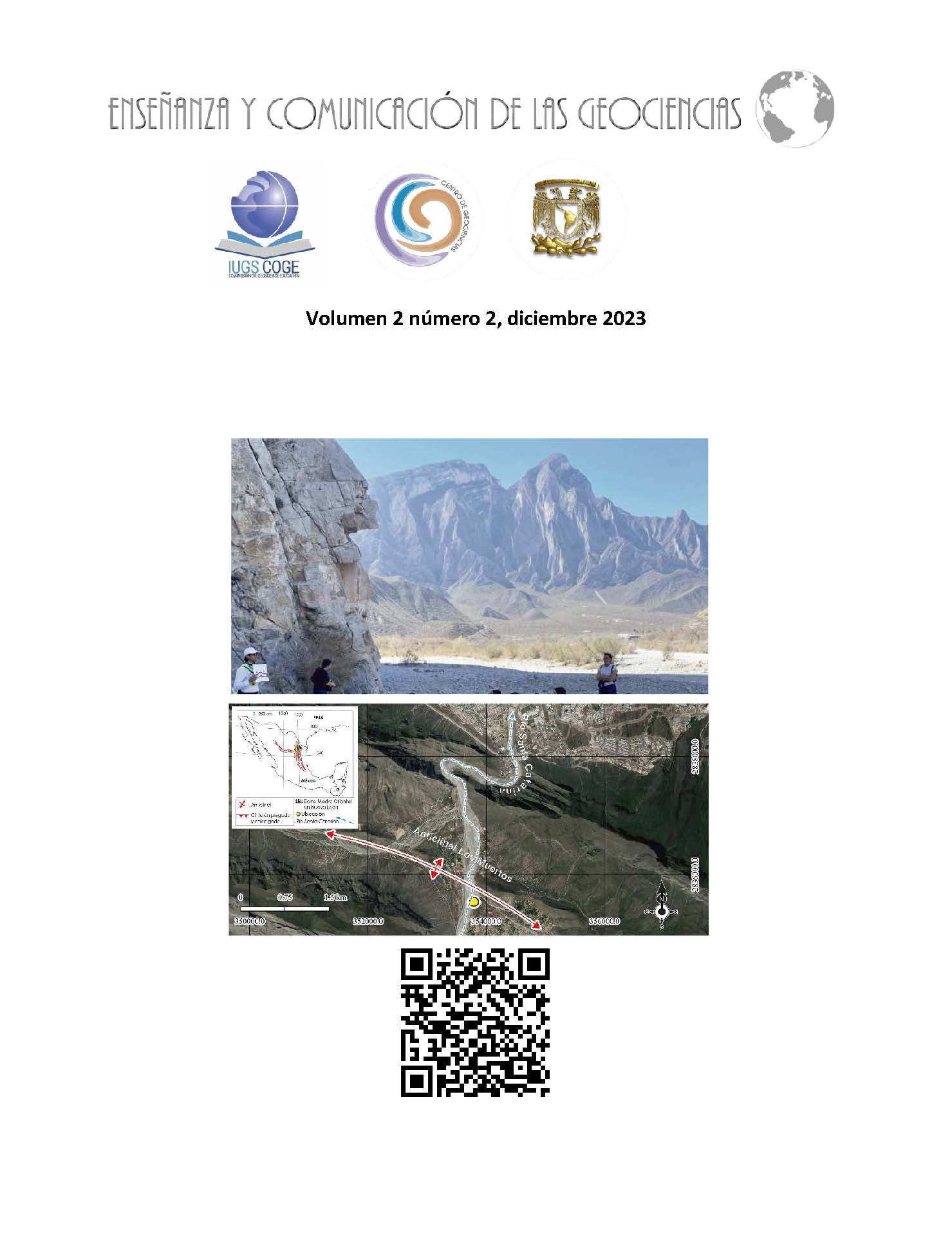Abstract
Ozone in the environment is a secondary pollutant that affects health and ecosystems, what makes its study and control important. Control of ozone emission is influenced by the reduction of its precursors, nitrogen oxides (NOx) and volatile organic compounds (VOCs). However, the relationship between ozone and its precursors is not linear, so reducing the emissions of any of them does not mean that the reduction in ozone concentration at the environment is guaranteed.
In this work, the non-linear relationship between ozone precursors and their environmental concentration is reviewed, as well as the implication of control strategies in emissions such as "Hoy No Circula" and their influence on maximum ozone concentrations. Some strategies that are suggested to be used in the future to abate precursors and, thereby improve air quality in the Mexico City Metropolitan Area (ZMCM) are also presented.
References
Bouley, M. D. (1992). Guide for using the Empirical Kinetics Modeling Approach Interface (EKMAI) (No. PB-92-196005/XAB; EPA-450/4-92/009). Environmental Protection Agency, Research Triangle Park, NC (United States). Office of Air Quality Planning and Standards.
Chameides, W., Fehsenfeld, F., Rodgers, M., Cardelino, C., Martinez, J., Parrish, D., Lonneman, W., Lawson, D., Rasmussen, R., y Zimmerman, P. (1992). Ozone precursor relationships in the ambient atmosphere. Journal of Geophysical Research: Atmospheres, 97(D5), 6037-6055.
Finlayson-Pitts, B. J., y Pitts Jr, J. N. (1986). Atmospheric chemistry. Fundamentals and experimental techniques, USA.
García-Reynoso, A., Jazcilevich, A., Ruiz-Suárez, L. G., Torres-Jardón, R., Suárez Lastra, M., y Reséndiz juárez, N. A. (2009). Ozone weekend effect analysis in México City [Article]. Atmosfera, 22(3), 281-297. https://www.scielo.org.mx/pdf/atm/v22n3/v22n3a4.pdf
Haagen-Smit, A. J. (1972). Abatement strategy for photochemical smog. Advances in Chemistry Series, 113, 169-190. https://doi.org/10.1021/ba-1972-0113.ch005
Haagen-Smit, A. J., y Fox, M. M. (1956). Ozone Formation in Photochemical Oxidation of Organic Substances. Industrial and Engineering Chemistry, 48(9), 1484-1487. https://doi.org/10.1021/ie51400a033
Jacobson, M. Z. (1999). Fundamentals of atmospheric modeling. Cambridge university press. USA.
Leighton, P. (2012). Photochemistry of air pollution. Elsevier. USA
Ley General del Equilibrio Ecológico y la Protección al Ambiente (LGEEPA), (2014). http://www.diputados.gob.mx/LeyesBiblio/ref/lgeepa.htm
Lin, X., Trainer, M., y Liu, S. (1988). On the nonlinearity of the tropospheric ozone production. Journal of Geophysical Research: Atmospheres, 93(D12), 15879-15888.
Molina, L., y Molina, M. J. (2002). Air Quality in the Mexico Megacity: An Integrated Assessment (Vol. 2). Springer Science and Business Media, Cambridge, USA.
Ruiz-Suárez, L. G., Mar-Morales, B. E., García-Reynoso, J. A., Andraca-Ayala, G. L., Torres-Jardón, R., García-Yee, J. S., Barrera-Huertas, H. A., Gavilán-García, A., y Cruz, R. B. (2018). Estimation of the impact of ozone on four economically important crops in the city belt of Central Mexico [Article]. Atmosphere, 9(6), Article 223. https://doi.org/10.3390/atmos9060223
Secretaría del Medio Ambiente de la Ciudad de México (SEDEMA). (2021). Página WEB aire. Retrieved 7/11/2021 from http://www.aire.cdmx.gob.mx/
Secretaría del Medio Ambiente de la Ciudad de México (SEDEMA) (2021). Inventario de emisiones de la Zona Metropolitana del Valle de México 2018 (D. n. d. P. d. C. d. A. Dirección General de Calidad del Aire Ed. 1 ed., Vol. 1). Gobierno de la Ciudad de México. https://www.sedema.cdmx.gob.mx/storage/app/media/DGCA/InventarioDeEmisionesZMVM2018.pdf
SEMA. (2017). Programa de gestión para mejorar la calidad del aire del estado de Coahuila de Zaragoza 2017-2026 [Report]. https://www.torreon.gob.mx/medioambiente/pdf/Pro_Aire_Coahuila_2017.pdf
Song, J., Lei, W., Bei, N., Zavala, M., de Foy, B., Volkamer, R., Cardenas,
B., Zheng, J., Zhang, R., y Molina, L. T. (2010). Ozone response to emission changes: a modeling study during the MCMA-2006/MILAGRO Campaign. Atmos. Chem. Phys., 10(8), 3827-3846. https://doi.org/10.5194/acp-10-3827-2010
Secretaría de Salud (SSA), (2014). Norma Oficial Mexicana NOM-020-SSA1-2014, Salud ambiental. Valor límite permisible para la concentración de ozono (O3) en el aire ambiente y criterios para su evaluación. Al margen un sello con el Escudo Nacional, que dice: Estados Unidos Mexicanos.-Secretaría de Salud. In Diario Oficial de la Federación (2014 ed., Vol. NOM-020-SSA1-2014,pp. 5).
Torres-Jardón, R., García-Reynoso, J. A., Jazcilevich, A., Ruiz-Suárez, G., y Keener, T. C. (2009). Assessment of the ozone-nitrogen oxide-volatile organic compound sensitivity of Mexico City through an indicator-based approach: Measurements and numerical simulations comparison [Article]. Journal of the Air and Waste Management Association, 59(10), 1155-1172. https://doi.org/10.3155/1047-3289.59.10.1155
Wallace, J. M., y Hobbs, P. V. (2006). Atmospheric science: an introductory survey (Vol. 92). Elsevier.

This work is licensed under a Creative Commons Attribution-NonCommercial 4.0 International License.
Copyright (c) 2023 Universidad Nacional Autónoma de México

